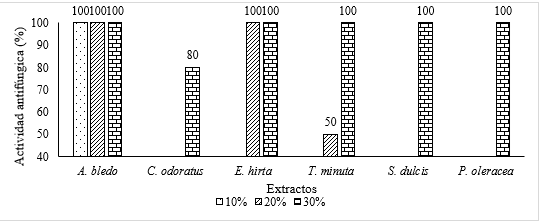lant extracts: an alternative for the control of diseases in cacao (Theobroma cacao)
Extractos vegetales: una alternativa para el control de enfermedades en el cultivo de cacao (Theobroma cacao)
Show authors biography
Cocoa (Theobroma cacao) faces pathogens during each of its productive cycles that considerably decrease its production. Every year plant pathogens like Moniliophthora roreri and Phytophthora palmivora directly affect the pods and can lead to serious losses. This research was developed in order to identify local plant species whose extracts contain compounds that have the ability to reduce the germination of pathogens spores, as well as the development of their mycelium. Extracts of the species amaranthus (Amaranthus bledo), rusty flat sedge (Cyperus odoratus), Lechosa (Euphorbia hirta), marigold (Tagetes minuta), sweet-broom (Scoparia dulcis) and purslane (Portulaca oleracea) were used to modificate culture media in concentrations of 10, 20 and 30%, on which spore suspensions and mycelium discs of the pathogens were inoculated. After the incubation periods, the percentages of germination, percentage of inhibition of mycelial development, fungicidal activity of the extracts and their effect on the structures of the hyphae of the pathogens were evaluated. The results showed that all the extracts to some extent influenced to some extent the development of the pathogens in all the variables studied, however, Amaranthus bledo and Euphorbia hirta were those species whose effect was notably superior to the other species under study, which would indicate that they are species with the potential to control pathogens at the field level.
Article visits 1063 | PDF visits




